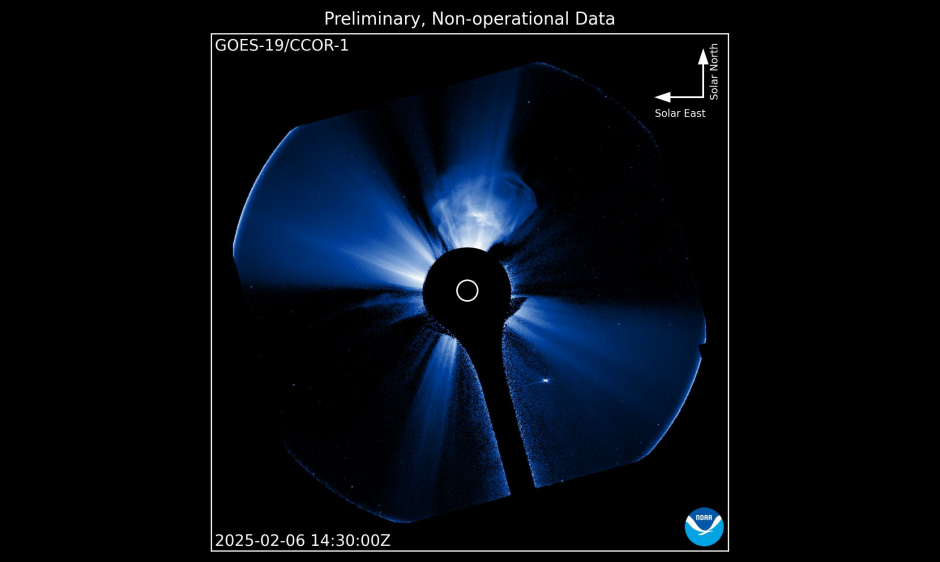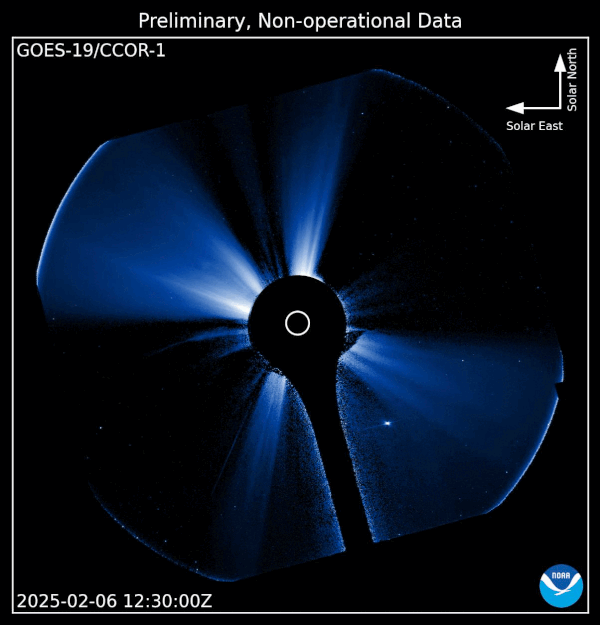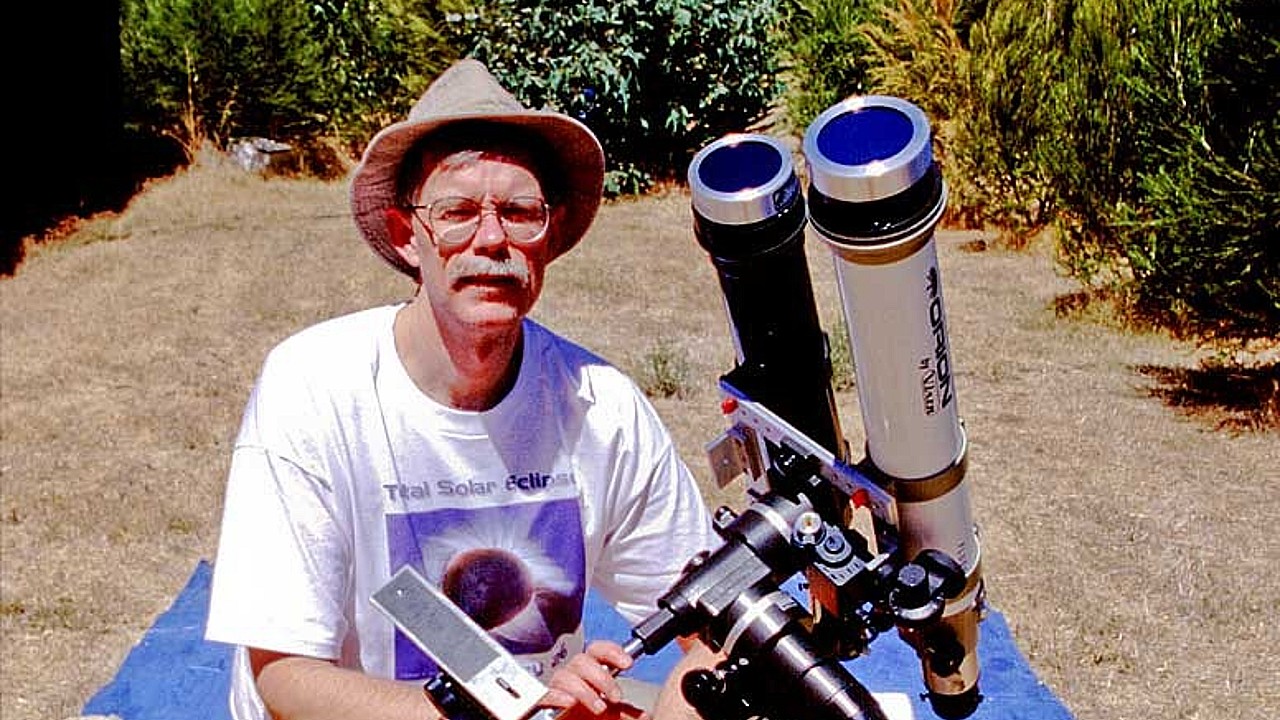Watch the sun erupt in new images from NOAA's weather satellite
"Every hour counts when you're dealing with CMEs."

A space-based telescope has captured new images of the sun that showcase one of our star's fiery outbursts.
The fresh visuals come courtesy of the National Oceanic and Atmospheric Administration (NOAA), which recently shared visuals captured by a telescope onboard its GOES-19 weather satellite. The team captured a coronal mass ejection (CME), which is a massive burst of charged particles and magnetic fields, erupting from the sun's far side, near its north pole.
Sometimes, these storms are directed toward Earth, such as last summer when a remarkable cluster of solar storms hit our planet and sparked stunning auroras across the globe. Such geomagnetic storms are the costliest type of space weather events, according to NOAA, as they can cause widespread disruption to satellites, navigation systems like GPS and electrical power grids.
Coincidentally, also visible in the new images is the planet Mercury, appearing as a tiny speck of light gliding closer to the sun.
Launched into Earth's orbit last June, GOES-19 is the newest addition to NOAA's fleet, equipped with a sensor called the Compact Coronagraph, or CCOR-1, visible as the dark blue circle blocking the brightest of light from the sun. It is specifically engineered to monitor solar activity, and chiefly keeps an eye on the sun's corona — the outermost layer of its atmosphere — to help scientists forecast space weather that could affect Earth.

The CCOR-1 instrument began observing the corona in September of last year, and is "the first near real time operational coronagraph that we have access to," Rob Steenburgh, who is a space scientist at NOAA's Space Weather Prediction Center, previously told Space.com.
CCOR-1 images the sun once every 15 minutes, providing uninterrupted coverage of the corona, according to NOAA. Scientists now don't have to wait for data to be downloaded, meaning they can save up to four to eight hours of time when compared to the efficiency of older instruments.
Get the Space.com Newsletter
Breaking space news, the latest updates on rocket launches, skywatching events and more!
"That's a huge leap for us because up until now, we've always depended on a research coronagraph instrument on a spacecraft that was launched quite a long time ago," Steenburgh said.
"Every hour counts when you're dealing with CMEs."
Join our Space Forums to keep talking space on the latest missions, night sky and more! And if you have a news tip, correction or comment, let us know at: community@space.com.

Sharmila Kuthunur is a Seattle-based science journalist focusing on astronomy and space exploration. Her work has also appeared in Scientific American, Astronomy and Live Science, among other publications. She has earned a master's degree in journalism from Northeastern University in Boston. Follow her on BlueSky @skuthunur.bsky.social
